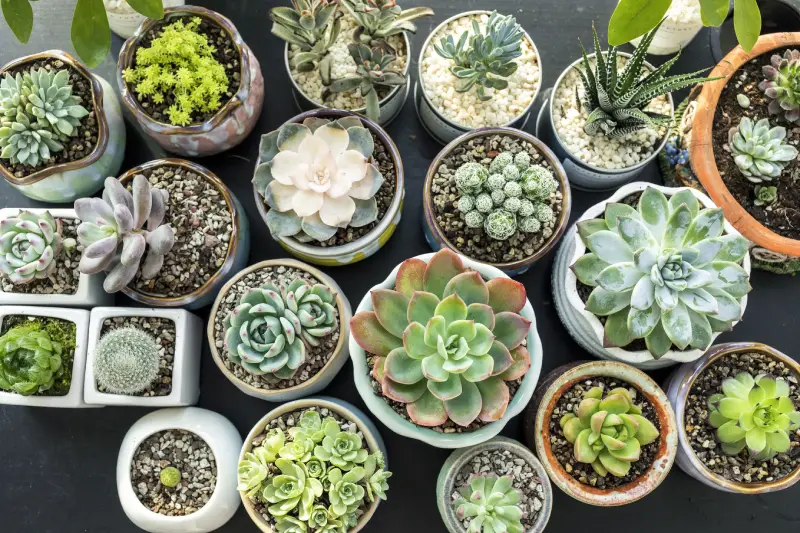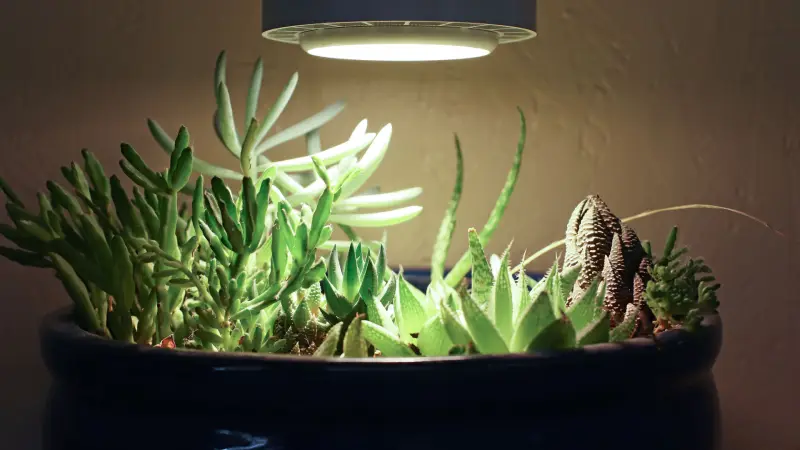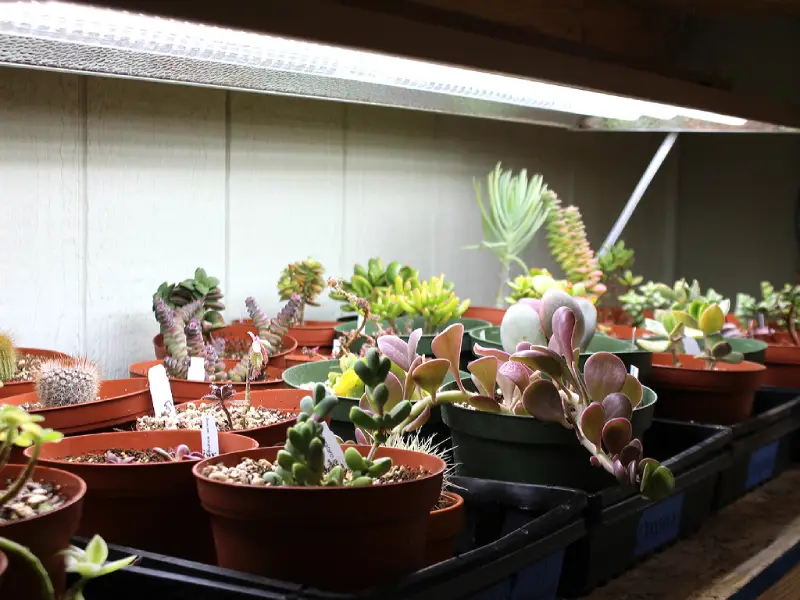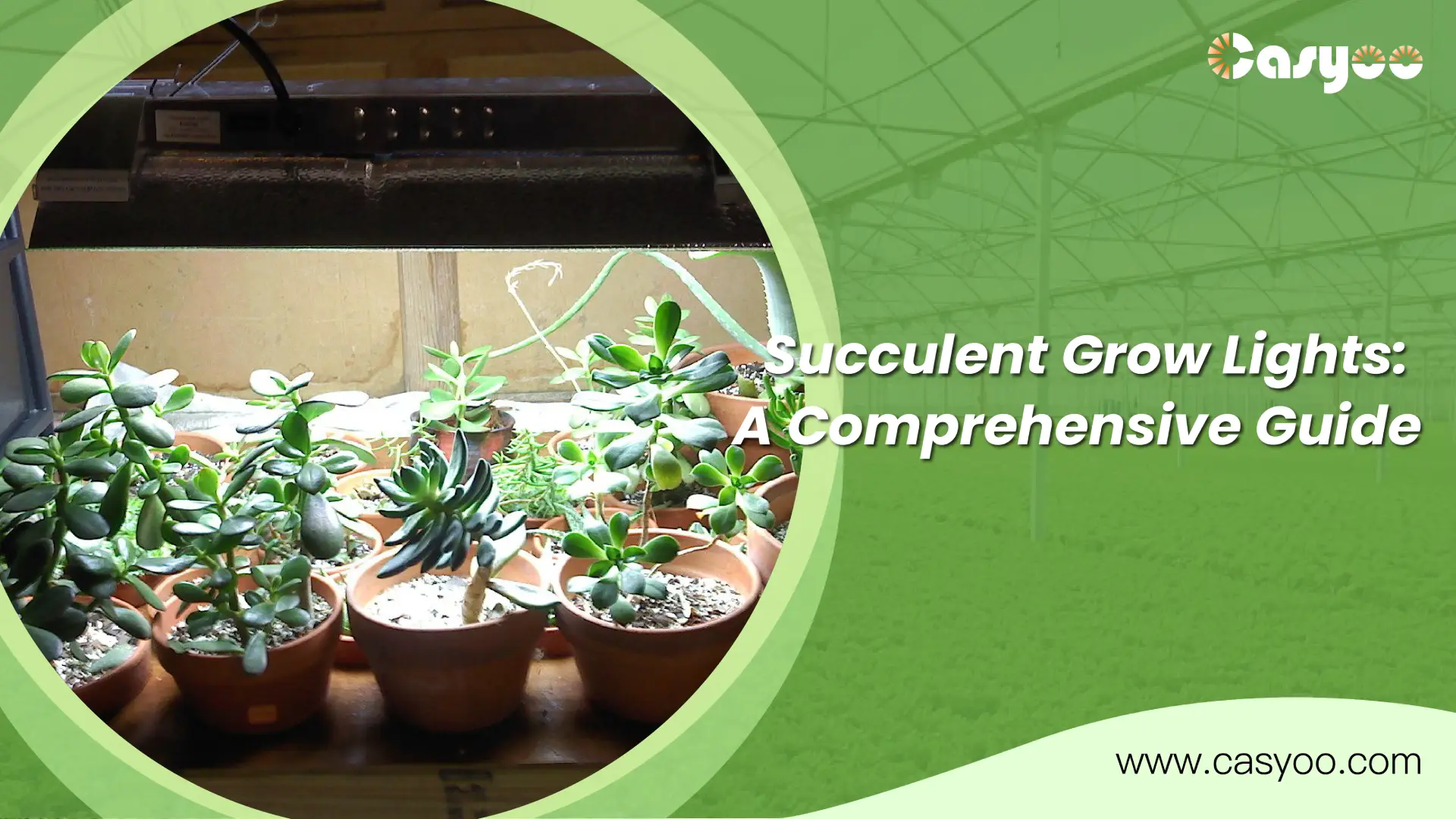As temperatures drop, many growers bring succulents indoors to protect them from freezing. Your home environment will provide a good temperature for your plants, and you’ll provide them with the water they need. But what about light? Should you use succulent grow lights?
What Are Succulents?

As the name suggests, succulents refer to those plants that are watery, juicy, and fleshy. To be more professional, they refer to those plants with hypertrophic nutrient organs and whose leaves degenerate to facilitate the storage of large amounts of water.
In gardening, they are sometimes called succulent flowers. They are mainly distributed in Crassulaceae, Agavaceae, Euphorbiaceae, Apocynaceae, Liliaceae, Aizoaceae, etc.
Do You Need Grow Lights for Succulents?
Succulents need sufficient light for photosynthesis to obtain the energy they need for growth. Without enough light, your succulents will stretch and become yellow, or even die. Placing in a sunny window can provide some light for succulents. But in winter or on rainy days, the light is often not enough, and you can observe whether they begin to stretch. If they do stretch, it suggest that they need more light. Then a grow light might be your best option.
What Are the Main Types of Succulent Grow Lights?
Fluorescent Grow Lights for Succulents
Fluorescent grow lights have been on the market for many years now. The bluish-white light emitted by fluorescent bulbs is perfect for helping succulents grow better. There was a time when growers were skeptical about using fluorescent lights because they were not very energy efficient. However, over time, these lights started to become more energy efficient. Likewise, there was a time when these lights could easily get hot. This in turn could cause the plants to burn, but this is no longer the case. As a result, people have started using fluorescent lights for growing succulents without any worries.
LED Succulent Grow Lights
The light emitted by LED lights is narrowly focused. This in turn helps the growth of succulents. Furthermore, some LED grow lights emit a mix of blue and red light, which is very friendly to succulents. However, the purple glow added by these lights might not be comfortable for people living in the house. Therefore, it is recommended to confine succulents to a limited area where the LED light can be focused specifically on the plants without causing any disturbance to others. Or you can choose full-spectrum LED lights, which emit white light that helps succulents grow at all stages. White light is also friendly to human eyes.
Why Use LED Succulent Grow Lights?

LED grow lights remain cool despite long operation, and you can worry less about burning your plants. Another advantage is that you don’t have to replace them regularly. These lights can run for longer periods of time.
On top of that, succulents feel like they are in their natural habitat when exposed to LED grow lights. This is a result of the blue and red light emitted by LED grow lights.
Blue Light: It helps succulents form chlorophyll. Chlorophyll is essential to help the strength and health of the roots, stems, and leaves of succulents. Likewise, this light helps keep succulents compact.
Red Light: The red light emitted by LED grow lights helps meet the flowering and fruit production needs of succulents. That being said, don’t worry about your succulents blooming at odd times. This light helps succulents bloom at the right time, such as in spring or summer.
How to Use LED Grow Lights for Succulent?
Your lights need to be at a certain distance from your succulents. Ideally, LED succulent grow lights should be placed about 14 to 30 inches above the plants.
Many new succulent growers believe that the longer succulents are exposed to artificial light, the faster they will grow. However, this is not true. Exposing succulents to LED grow lights 24 hours a day is not ideal. These plants need to be in darkness for at least 6 hours to grow well. Therefore, succulents need to receive about 14 to 18 hours of light per day.
How to Choose LED Succulent Grow Lights?

Identify Your Succulent type
Every succulent is unique. Therefore, you need to research the succulents you grow. Each succulent responds differently to light conditions.
Know Your Growing Purpose
If you plan to grow succulents at home, then you will not need many grow lights. On the other hand, if you plan to grow multiple succulents in a large greenhouse, you need to make sure that all plants are adequately covered by LED lighting. If you use fewer lamps, then the succulents that are close to the LEDs will definitely thrive. However, those succulents that are placed at a distance may not benefit from the LED succulent grow lights and thus fail to grow healthily.
Buy High-Quality LEDs
If you end up buying low-quality LED grow lights, you may face two problems. First, the lights may flicker all the time. Second, low-quality lights may generate a lot of heat. Both of these situations may harm the health of your succulents. Lights that keep turning on and off will not provide enough light to your succulents. Similarly, LED grow lights that are easily heated up can burn your succulents. Therefore, it is ideal to choose ones that are equipped with heat sinks. Heat sinks help the hot air to move away, thus preventing damage to the LED lights and succulents.
Final Thoughts
I hope this guide to succulent grow lights can help you. Remember to bring your succulents indoors before the temperature drops too cold.
Casyoo has delivered high-quality succulent grow lights for more than 17 years. Please feel free to contact us if you have any questions.




